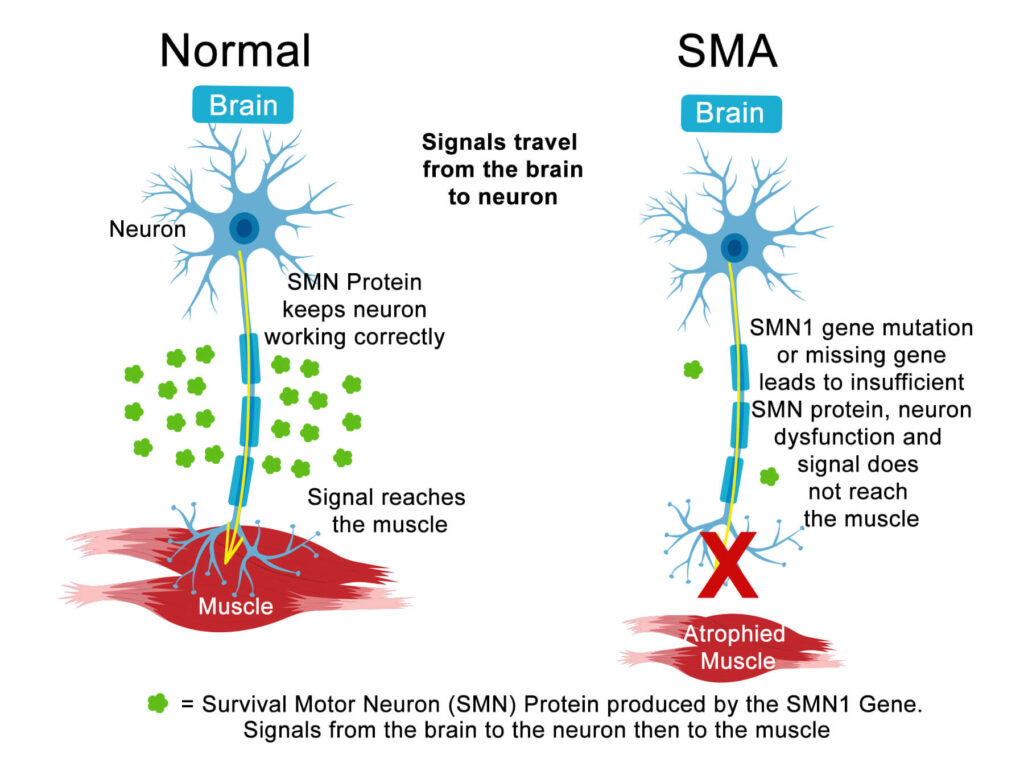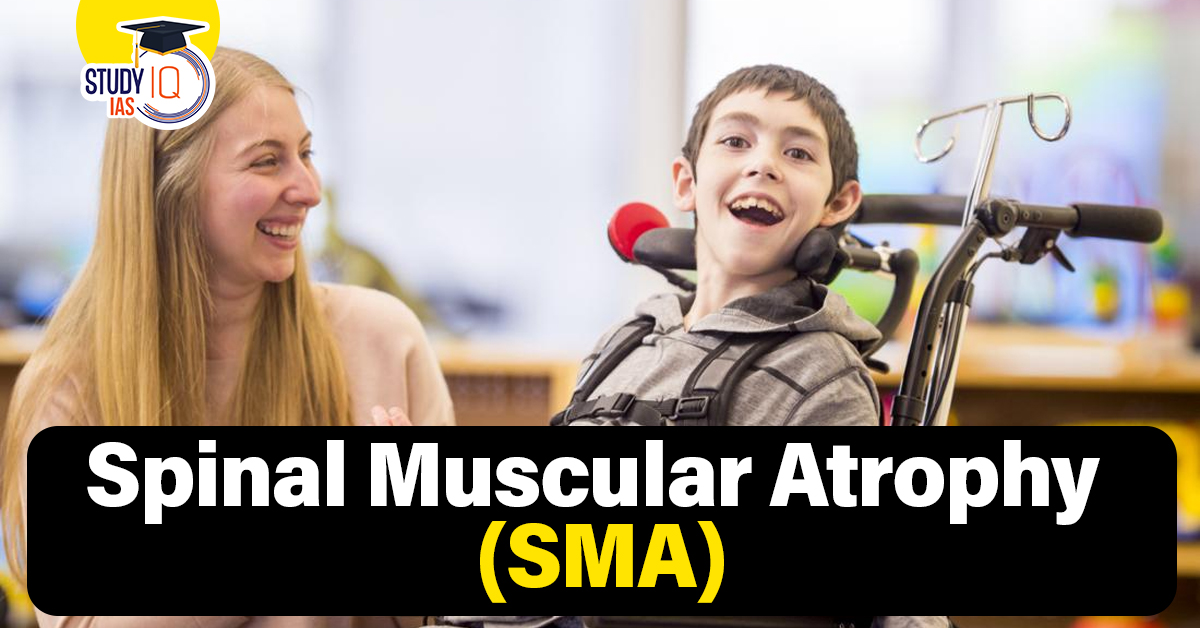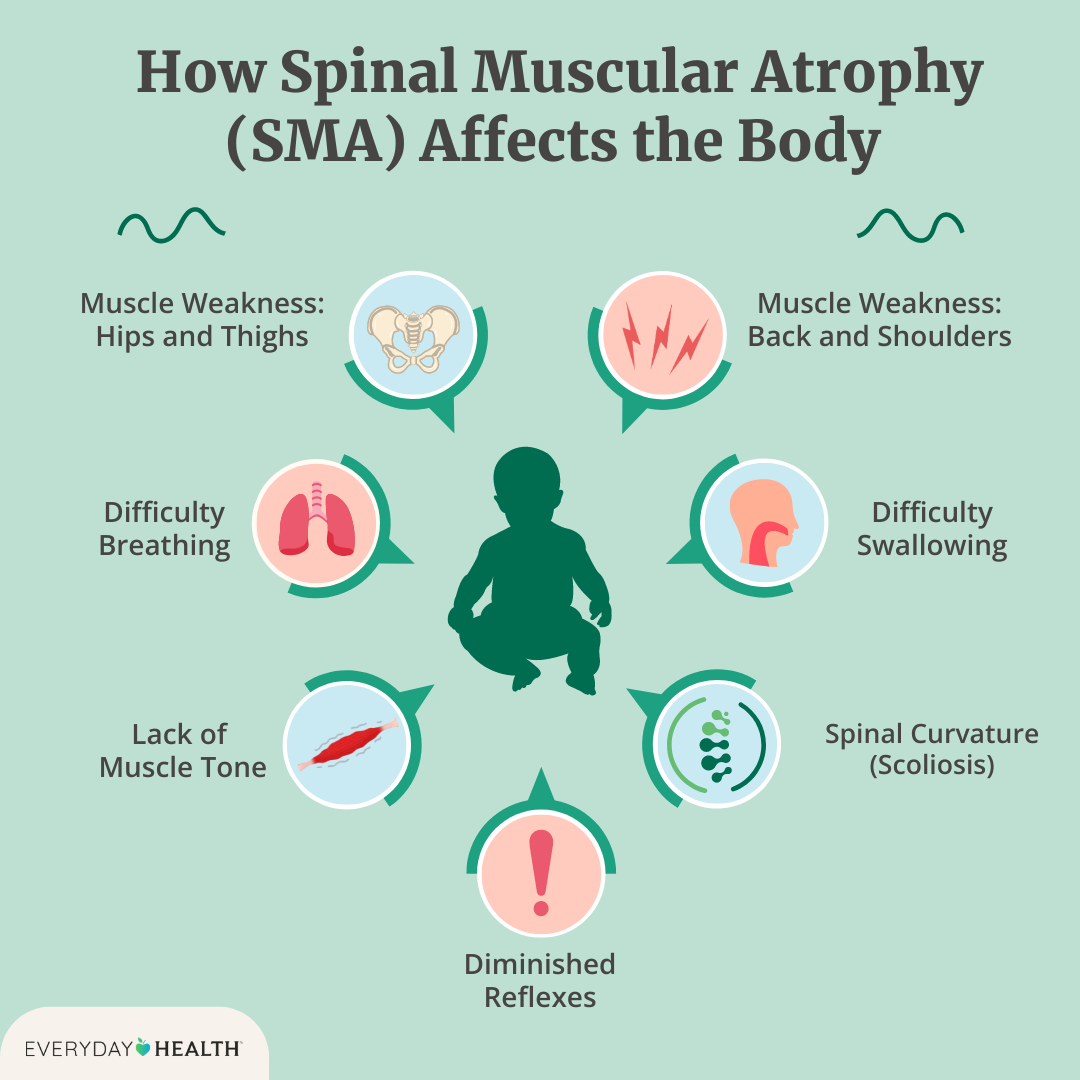Table of Contents
Context: Kerala’s SAT Hospital gave India’s first presymptomatic SMA treatment to a newborn identified through prenatal screening, using the rare drug Risdiplam to prevent future nerve damage. Recently, a two-and-a-half-year-old girl has become the first person in the world to be treated for Spinal Muscular Atrophy while still in the womb.
What is Spinal Muscular Atrophy (SMA)?
Spinal Muscular Atrophy (SMA) is a genetic disorder that leads to muscle weakness due to the malfunctioning of the motor neurons. These motor neurons are responsible for sending signals from the brain to the muscles, enabling movement. When these neurons stop working properly, it leads to muscle weakness and progressive loss of muscle function.
What Causes SMA?
SMA is caused by a mutation in the SMN1 gene, which plays a crucial role in producing a protein essential for the health of motor neurons. This protein helps keep the neurons functioning, but when it is not produced in adequate amounts, the neurons degenerate, leading to the weakening of muscles over time.
Inheritance
- SMA is inherited in an autosomal recessive manner, meaning that both parents must be carriers of the faulty SMN1 gene for their child to inherit the disorder.
- If both parents carry the mutated gene, there is a 25% chance their child will develop SMA.

Symptoms of SMA
- Muscle Weakness: Muscle weakness begins in the proximal muscles (closer to the body’s core) and progresses over time.
- Difficulty Moving: This can lead to difficulties with tasks such as walking, breathing, and swallowing.
- Delayed Milestones: In infants, SMA may cause delays in reaching developmental milestones, such as rolling over, sitting up, or walking.
Prevalence
- Affects about 1 in 10,000 births.
- It is one of the leading genetic causes of infant and child mortality.
Types of Spinal Muscular Atrophy (SMA)
- Type 0: Most severe; symptoms begin before birth.
- Type 1: Appears within the first 6 months of life.
- Type 2: Onset between 6 and 18 months.
- Type 3: Develops after 18 months into adolescence.
- Type 4: Adult-onset, usually mild symptoms.
Treatment & Symptom Management of SMA
No cure exists currently.
- Symptom management includes:
- Physical therapy – improves posture, mobility, and slows muscle weakening.
- Nutritional support, respiratory care, and assistive devices may be used.
- FDA-approved therapies (2016–2020):
- Disease-modifying therapies – slow disease progression.
- Gene replacement therapy – targets the root genetic cause.
Spinal Muscular Atrophy is a serious genetic disorder that impacts motor neurons, resulting in progressive muscle weakness. However, with early diagnosis and advances in treatment, including gene therapy and supportive care, the progression of SMA can be managed effectively, leading to improved quality of life for affected individuals.



 INS Udaygiri, Key Features, Capabilities...
INS Udaygiri, Key Features, Capabilities...
 Mental Healthcare in India, Scope and Go...
Mental Healthcare in India, Scope and Go...
 Most Commonly Used Cancer Drugs and Thei...
Most Commonly Used Cancer Drugs and Thei...





















